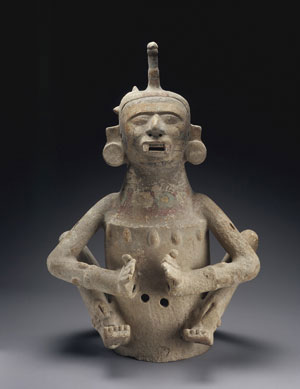|
We can learn about the effigy both by studying the art form and its ritual function.
A large Postclassic Nahua ceramic effigy censer preserved in the Princeton University Art Museum is an extraordinary representation of abstract human form, and because it was produced just prior to European incursion, the ritual purposes for which it was intended became the subject of intense scrutiny by Franciscan and Dominican friars. Remarkably, many of these practices continue to the present day, despite concerted efforts to eradicate them over the last five centuries, first by fervent evangelization and later by national health and education programs. These circumstances present an unparalleled study opportunity with respect to the interpretation of the function of the censer and by extension comparable forms of ancient Mexican art. |






